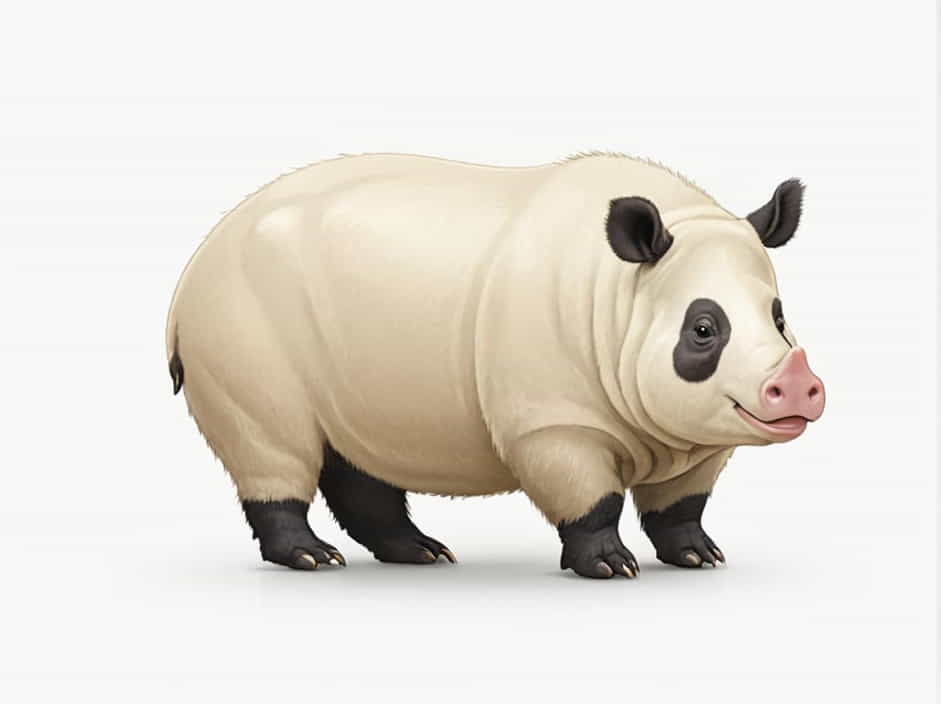When we think of the fattest animals in the world, our minds might go to overweight pets or large land animals like elephants. However, the true fattest animals on Earth are much larger and more fascinating than most people realize.
From the giant blue whale to massive land mammals, this topic explores the heaviest creatures in the animal kingdom, how they maintain their incredible size, and what makes them unique.
What Defines the Fattest Animal?
The term "fattest" can refer to different things:
-
Total body weight – the absolute heaviest animals.
-
Body fat percentage – the highest proportion of fat relative to body size.
-
Blubber thickness – essential for marine mammals to survive cold waters.
Using these factors, let’s explore the real fattest animals on the planet.
1. The Blue Whale – The Heaviest and Fattest Animal on Earth
Why is the Blue Whale the Fattest?
The blue whale (Balaenoptera musculus) is the largest and heaviest animal ever to exist. These massive marine mammals can reach:
-
Weight: Up to 200 tons (400,000 pounds).
-
Length: Over 100 feet (30 meters) long.
-
Blubber Thickness: Around 12 inches (30 cm) thick.
How Do Blue Whales Get So Fat?
Blue whales consume up to 4 tons of krill per day, which provides them with the energy to maintain their enormous blubber reserves. Their thick layer of fat helps them:
-
Store energy for long migrations.
-
Stay warm in icy ocean waters.
-
Increase buoyancy, making it easier to float.
This makes the blue whale the real fattest animal on the planet in terms of both total weight and fat reserves.
2. The Elephant Seal – The Fattest Land Mammal
How Fat Are Elephant Seals?
The southern elephant seal (Mirounga leonina) is the fattest land mammal, even though it spends much of its time in the ocean.
-
Weight: Up to 8,800 pounds (4,000 kg).
-
Blubber Thickness: Over 4 inches (10 cm).
Why Do They Have So Much Fat?
Elephant seals build up thick blubber layers to:
-
Survive the freezing waters of Antarctica.
-
Go without food during long breeding and molting periods.
-
Store energy reserves when they spend months at sea hunting.
3. The Hippopotamus – The Fattest Land Animal by Body Mass
Hippos Are Surprisingly Fat
Hippos may not be the heaviest land animal (elephants win that title), but they have the highest body fat percentage of any land mammal.
-
Weight: Around 3,300-4,000 pounds (1,500-1,800 kg).
-
Fat Percentage: Up to 35% of their body mass is fat.
Why Are Hippos So Fat?
Despite their semi-aquatic lifestyle, hippos need thick fat layers for:
-
Buoyancy in the water.
-
Energy reserves during food shortages.
-
Insulation from cold water.
Unlike whales and seals, hippos don’t have blubber-their fat is stored directly under the skin.
4. The Walrus – A Fat Marine Mammal with Huge Blubber Stores
How Fat Are Walruses?
Walruses are another blubber-heavy marine mammal.
-
Weight: Up to 3,700 pounds (1,700 kg).
-
Blubber Thickness: Over 6 inches (15 cm).
Why Do Walruses Have So Much Fat?
Walrus blubber serves several key purposes:
-
Keeping warm in Arctic waters.
-
Providing energy during long dives.
-
Helping with buoyancy while swimming.
Their fat is essential for survival, especially in extreme environments.
5. The Pygmy Right Whale – A Lesser-Known Fatty Giant
A Whale with Extreme Fat Reserves
While blue whales hold the record for total weight, the pygmy right whale (Caperea marginata) is one of the fattest in terms of body composition.
- Fat Percentage: Around 50% of its body mass is blubber.
Why So Much Fat?
Pygmy right whales use their blubber to:
-
Stay warm in cold Southern Hemisphere waters.
-
Store energy for long periods without eating.
-
Maintain buoyancy and insulation.
6. The Capybara – The Fattest Rodent in the World
How Heavy Are Capybaras?
Capybaras are the largest and fattest rodents, reaching:
-
Weight: Up to 175 pounds (79 kg).
-
Fat Percentage: Around 20-30% of body mass.
Why Are Capybaras So Fat?
Capybaras store fat to survive periods when food is scarce. They live in wetland habitats where their fat helps with buoyancy in the water.
7. The Fat-Tailed Gecko – The Fattest Reptile
How Fat Are They?
The fat-tailed gecko (Hemitheconyx caudicinctus) may be small, but it stores fat in its tail to survive food shortages.
- Tail Fat Storage: Can make up 30% of body weight.
Why Do They Store Fat?
-
Allows them to survive weeks without food.
-
Provides energy for breeding seasons.
-
Acts as a backup food supply in the wild.
Who Holds the Title of the Fattest Animal?
The blue whale is the real fattest animal in the world, weighing up to 200 tons and having thick blubber layers that make up a significant portion of its body.
However, other animals also deserve recognition for their fat content:
-
Elephant seals and walruses have massive blubber stores.
-
Hippos have the highest body fat percentage among land mammals.
-
Capybaras are the fattest rodents, while fat-tailed geckos store energy in their tails.
Each of these animals has evolved to store fat for survival, whether for warmth, energy storage, or buoyancy. Their unique adaptations make them some of the most fascinating creatures on Earth.
